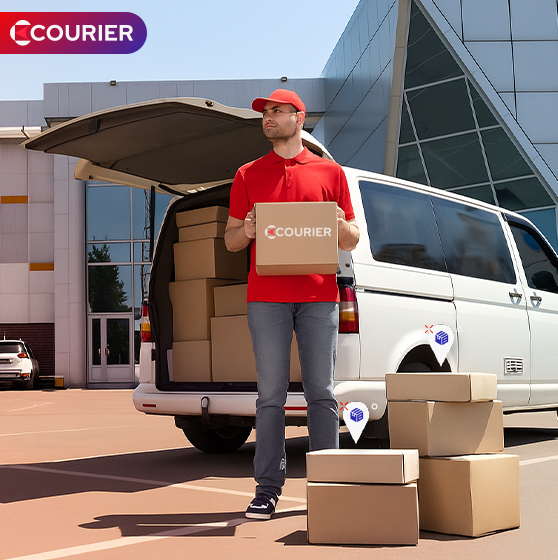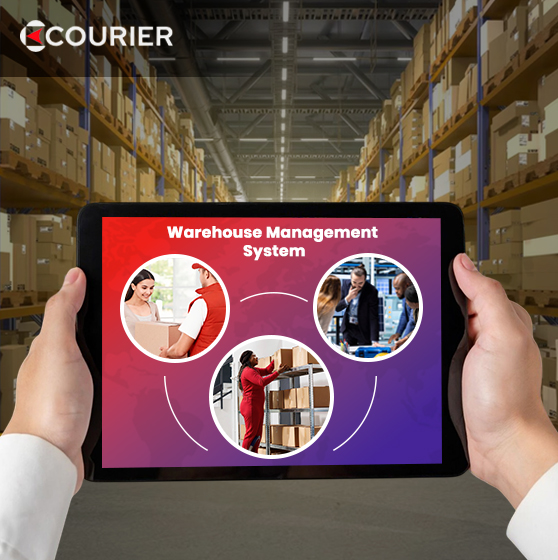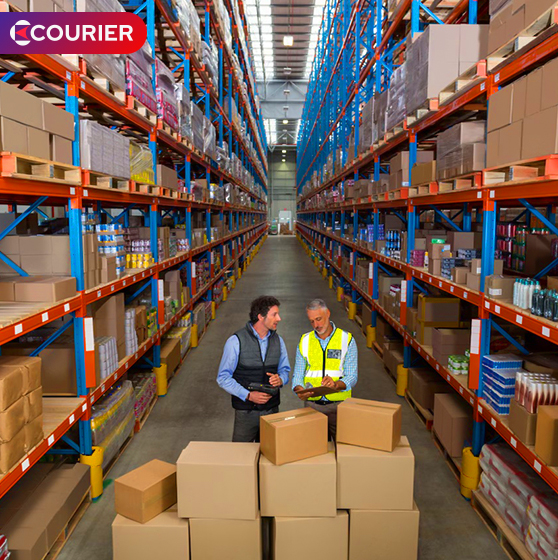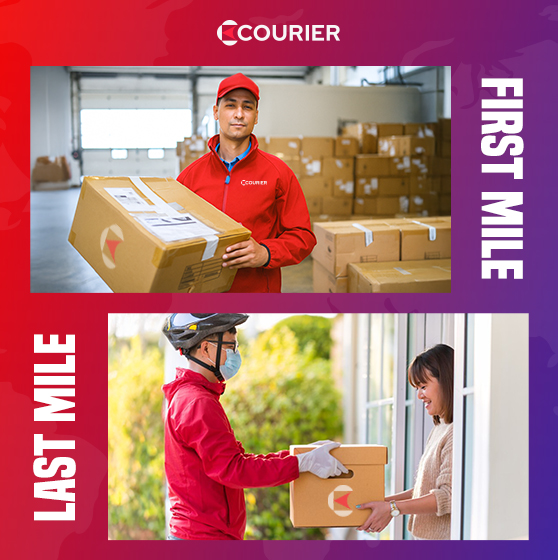
Today’s consumers don’t just want quick and affordable delivery; they expect it.
Is it free shipping? That’s a bonus.
Is there a same-day arrival? Even better.
As online shopping becomes the norm, businesses are under growing pressure to meet these expectations while keeping costs down. So, how can companies stay competitive without cutting corners?
The answer lies in one of the most crucial and often most complex parts of the shipping process: last mile delivery.
But what exactly does last mile delivery mean? Why is it the most expensive and demanding part of logistics? And how can companies overcome their challenges to improve efficiency, speed, and customer satisfaction?
This blog will explore the meaning, problems, and future of last-mile delivery. Stay tuned!
Summary: Last mile delivery is the final step of getting a product from a warehouse to your doorstep. It’s often the most expensive and challenging part of the logistics process. It involves navigating traffic, tight schedules, and rising customer expectations.
With smart tech, real-time tracking, and route optimization, businesses transform this complex process into a satisfying customer experience.
Table of Contents
Define Last Mile Delivery
When someone asks, “What is the last mile in shipping?” they ask how a business handles the most visible and emotional part of the buying journey. Last mile delivery means the final stage of a product’s journey. It travels from a warehouse or distribution center to the customer’s doorstep at this stage. This crucial phase often determines customer satisfaction because it directly impacts on-time delivery. If businesses overlook this step, they risk late shipments, higher costs, and negative reviews.
Customers today expect fast, reliable, and transparent service. So, companies must improve their last mile delivery tracking if they want to meet these expectations. For instance, frustration builds if a customer places an urgent order and the business fails to provide real-time tracking updates. That’s where better planning, smart tech, and efficient delivery vehicles play a role.
Businesses can solve most delivery issues by identifying the root causes. GPS and route optimization software can streamline the path if traffic congestion or route confusion slows down drivers. For example, drivers can avoid delays and complete the route faster if they receive updated directions during delivery.
During the third trimester, especially around peak seasons like holidays, mile delivery becomes even more critical. If retailers ignore this seasonal pressure, they may lose sales or damage their brand image. On the other hand, if they hire extra drivers or collaborate with local couriers, they can ensure timely arrivals and happier customers.
What is the last mile problem?
Now that you know what last-mile delivery means, this step causes the most complications in logistics. Such a challenge is known as the mile delivery problem.
If companies fail to manage this stage effectively, they face delays, high operational costs, and customer dissatisfaction. For instance, if a delivery driver gets stuck in traffic or receives unclear instructions, the package may not arrive on time. That’s a serious issue, especially when customers expect fast and accurate service.
The mile delivery problem typically arises due to unpredictable traffic, lack of real-time updates, inefficient routing, and delivery density. A perfectly managed supply chain can collapse at the last step if businesses do not fix these bottlenecks. However, they can resolve most of these issues by implementing smarter routing software, strategically allocating orders, and investing in mobile tracking tools.
For example, If a courier must deliver five parcels within a busy city zone, unclear maps or parking problems may cause significant delays. However, if that delivery driver receives optimized routes and live updates, they can reach each final destination efficiently.
Solving the mile delivery problem is not just about speed—it’s about control. If businesses improve visibility, they improve trust. And when they understand the meaning of last-mile delivery, they can finally deliver both packages and satisfaction.
Software Can Solve Your Biggest Challenges
If your business struggles with the mile problem, smart software can turn things around quickly. Most delivery delays happen because companies rely on outdated systems or manual planning. To improve accuracy and speed, you must use software that optimizes delivery routes in real time.
For example, if drivers waste time on inefficient paths or stop frequently due to traffic, delivery software can instantly reroute them. This ensures faster arrivals, fewer errors, and better resource use. As a result, you reduce fuel costs and increase customer satisfaction.
A tech-powered delivery process also brings clarity and control if your team manages multiple orders daily. The software automatically assigns packages based on location, urgency, and availability. It saves immense time and energy. That’s essential, especially when you offer last mile delivery services and want to meet tight delivery times.
During busy periods like the third trimester, when orders peak, the right tools make a massive difference. If a business scales its operations without upgrading its systems, problems multiply. However, if it integrates delivery management software, the workflow becomes seamless.
Specifically, the software doesn’t just support your logistics – it solves the root of your mile problem. Investing in the right solution is no longer optional if you want fewer complaints and faster deliveries.
How does last mile delivery affect business success?
Last mile delivery affects business success by directly shaping the overall customer experience. Customers lose trust if your business delivers products late, damaged, or without updates. As a result, the final leg of the shipping process matters more than ever. You must get the last mile right to build a loyal customer base.
Most businesses face high mile delivery costs because this stage involves multiple stops, route inefficiencies, and unpredictable variables. However, if you adopt a proper mile logistics solution, you reduce waste and improve speed. For example, using AI-based route optimization helps drivers avoid traffic and complete more deliveries in less time.
If you ignore the last-mile issues, your customers might choose faster competitors. Nevertheless, you gain an edge by focusing on efficiency, accuracy, and transparency. If a customer receives real-time tracking updates and a perfectly timed delivery, they will remember the smooth experience. It’s more likely they will reorder with you, thereby increasing your customer retention rate.
Moreover, if you analyze delivery data regularly, you can find patterns and fix repeated errors. That’s how smart companies turn last mile challenges into opportunities. They look at problems not as roadblocks but as ways to improve service.
In the long run, the real last mile delivery benefits include happier customers, a stronger brand reputation, and increased profitability. If your business wants long-term success, you must treat the last mile not as an afterthought but as a core part of your strategy.
What slows down last-mile delivery?
Last-mile delivery often becomes the most unpredictable and expensive part of the entire logistics chain. Businesses that do not actively identify and address the pain points risk delays, rising costs, and dissatisfied customers.
The last mile delivery challenges vary depending on location, infrastructure, and demand. However, the root causes tend to follow a clear pattern.
Here are some of the most common issues and how a strong mile delivery solution can fix them.
Inefficient Delivery Routes
If businesses fail to optimize delivery paths, drivers waste time navigating traffic or backtracking between stops. Such lack of planning increases fuel costs and delays arrival times. When companies use intelligent routing software, they can:
- Cut travel time.
- Reduce operational stress.
- And improve efficiency across their mile logistics chain.
Unpredictable Traffic and Road Conditions
If delivery drivers face sudden traffic jams, poor road conditions, or construction zones, they often miss delivery windows. These situations create frustration for both the customer and the company. However, if businesses equip drivers with real-time traffic updates and GPS rerouting, they can avoid bottlenecks and keep the schedule intact.
Failed Delivery Attempts
Sometimes, when a customer isn’t home or provides an incorrect address, the driver wastes time and resources. Ultimately, the package remains undelivered. These missed opportunities increase the biggest challenges in logistics. A smart mile delivery solution can send customers live updates and time windows, significantly reducing the chance of failed attempts.
Poor Communication Across Teams
If warehouse staff, dispatchers, and delivery drivers operate in silos, delays and confusion are inevitable. An extreme lack of coordination leads to misrouted packages and unclear instructions. Nevertheless, if businesses implement integrated platforms, they can streamline the communication flow. This will benefit all team members by keeping them aligned and improving overall mile logistics efficiency.
High Delivery Density Without Automation
If a company receives too many orders in a concentrated area without automation, it may overload drivers and lose control of the process. Manually handling hundreds of orders during peak seasons becomes one of the last-mile delivery challenges. Automation tools to batch deliveries and assign optimal routes can solve this quickly and effectively.
How to speed up last-mile delivery?
What does last mile refer to in today’s world? It means meeting rising demands, narrowing the delivery window, and keeping up with the pace of online shopping. Speed is the heart of modern logistics. To stay competitive, businesses must deliver quickly, accurately, and consistently. However, the last mile delivery challenges often make achieving that goal difficult.
This final leg can damage the customer experience, from route delays to failed deliveries, if left unchecked. Fortunately, there are some right-mile delivery solutions and strategies that can eliminate friction and enhance performance.
Check these out:
Optimise Routes with Smart Tech
Advanced route optimization tools help drivers navigate the most efficient routes. It ultimately reduces fuel consumption and delivery time. Instead of relying on guesswork, you can use traffic data, stop density, and mapping software to avoid delays.
Offer Flexible and Clear Delivery of Windows
When you set realistic delivery window expectations, it ensures customers are available to receive their packages. This reduces failed attempts and lets delivery teams move quickly from one drop-off to the next without unnecessary backtracking.
Strengthen Coverage in Rural Areas
Deliveries in rural areas often take longer due to sparse populations and limited infrastructure. You can partner with local couriers or set up a regional hub. This helps speed up the last mile by reducing the distance between the final stop and the customer.
Use Shopping Data to Predict Demand
Monitoring online shopping trends allows businesses to plan better. When you know when and where demand will spike, you can add more drivers, vehicles, or resources in advance. This can prevent system overload and late deliveries.
Continuously Improve Mile Service with Tracking
One aspect that gives visibility into delays and bottlenecks is real-time tracking and analytics. As a business owner, if you can study your mile service performance regularly, you will enjoy certain advantages. These include making faster decisions, adjusting routes, and ultimately delivering a smoother, faster customer experience.
How to Reduce Last Mile Costs?
What does last-mile delivery mean for a growing business? It’s the final and often most expensive step in the supply chain. Rising customer expectations, fuel prices, and delivery complexities can increase costs with every package.
But reducing last mile delivery costs is not just about spending less. Rather, it’s about delivering smarter. If you are serious about driving change and increasing efficiency, these five strategies can make a measurable impact.
Consolidate Deliveries Whenever Possible
Delivering multiple packages to the same area helps reduce mileage, fuel use, and vehicle wear. You can batch orders by location or schedule drops within close time frames to maximize every trip. Such a small shift cuts down on operational waste and saves money long term.
Leverage Technology for Smarter Routing
AI-based tools are great for creating dynamic, optimized delivery routes for B2B retail fulfillment. These tools consider traffic, weather, and customer preferences to make deliveries more efficient. As a result, your drivers spend less time on the road, and your business spends less on logistics.
Utilise Localised Micro-Fulfilment Centres
Placing inventory closer to high-demand areas allows faster, cheaper deliveries. Micro-fulfillment centers can reduce travel distance and improve same-day service without overwhelming central warehouses. Therefore, cost and risk are minimized, especially during peak shopping seasons.
Enable Real-Time Delivery Tracking for Customers
Customers appreciate visibility. When they know exactly when a package will arrive, failed delivery attempts decrease. This saves time and money spent on repeat trips while also boosting trust in your service.
Adopt Sustainable Delivery Practices
Electric bikes, route pooling, and carbon offsetting lower emissions and reduce fuel and maintenance expenses. Businesses that take a sustainable approach to the last mile save costs and build stronger brand loyalty, creating a win-win in the long run.
Trends That Will Continue to Shape Last Mile Delivery
The mile delivery operations are transforming day by day. Businesses face growing pressure to meet customer expectations, cut costs, and stay competitive. Today’s customers want more than fast delivery. They expect accurate tracking, shorter service time, and exceptional reliability.
To keep up, companies must innovate every step of the journey, from route planning to doorstep drop-off. Understanding these trends will help businesses enhance their on-time rates and create more resilient logistics strategies.
Many businesses are now asking what is middle mile delivery, as it plays a critical role in transporting goods between warehouses, distribution centres, and local hubs. It’s often overlooked, but essential for keeping the entire operation smooth and timely.
Middle mile delivery refers to the transportation of goods from a supplier or warehouse to a distribution centre or local fulfillment hub. It acts as the critical link between first mile and last mile operations.
Understanding the latest trends will help businesses enhance their on-time rates and create more resilient logistics strategies.
Smarter Route Planning with Real-Time Data
Companies are using AI-powered tools for route planning, which helps optimise travel paths, reduce fuel consumption, and improve on-time rates. This boosts efficiency and ensures drivers spend less time navigating delays, enabling them to complete more deliveries on time.
Growth of Micro-Fulfilment for Faster Service Time
Businesses are opening urban micro-fulfillment centers to bring goods closer to customers. This change speeds up service time and allows more deliveries per day, making the mile delivery operation more responsive and efficient.
Adoption of Green Vehicles for Long-Term Savings
Electric vans and eco-friendly delivery bikes are changing how companies approach logistics. These vehicles reduce emissions and fuel costs, all while supporting smoother mile delivery operations in dense or regulated zones.
Specialized Handling for Heavy Lifting Deliveries
As demand for oversized items grows, companies must train drivers and invest in proper equipment for heavy lifting. When handled correctly, these deliveries can be executed quickly and safely. The on-time rates and customer satisfaction, therefore, will stay intact.
Difference Between First Mile Delivery and Last Mile Delivery
In the logistics and eCommerce world, efficient delivery is everything. While the focus is on the final hand-off to customers, understanding the first mile and last mile is crucial. These aspects of the delivery journey streamline operations, reduce costs, and enhance customer satisfaction.
Below, we have presented a step-by-step breakdown of the key differences:
-
Definition & Role In The Supply Chain
First Mile Delivery refers to the initial movement of goods from the manufacturer or supplier to a warehouse, distribution centre, or fulfillment hub. However, last mile delivery is the final step in the logistics chain. Here, the product is delivered from a distribution point to the end customer’s doorstep.
-
Start and End Points
To be specific, the first mile starts at the origin of production and ends at a logistics facility. On the contrary, the last mile starts at a logistics or local distribution centre and ends with the customer.
-
Stakeholders Involved
First Mile involves manufacturers, suppliers, and transport companies. Oppositely, the last mile involves delivery drivers, couriers, and eCommerce platforms focused on customer experience.
-
Technology and Optimization
First mile benefits from inventory software, route planning, and warehouse automation. On the other hand, the last mile requires real-time tracking, customer communication tools, and route optimization.
Courier Platform Is Ready To Transform Your Last Mile Delivery!
You now know What is last mile delivery – embrace a smarter way to deliver. Our courier platform simplifies every step of your last mile process. We give you full control, better visibility, and happier customers. With powerful tools built to handle the everyday demands of modern delivery, you can stay ahead of the curve.
Start transforming your delivery experience today and deliver with confidence.
Contact our team or book a demo. Let’s build a smarter, faster, more reliable delivery operation together.
Recent Posts




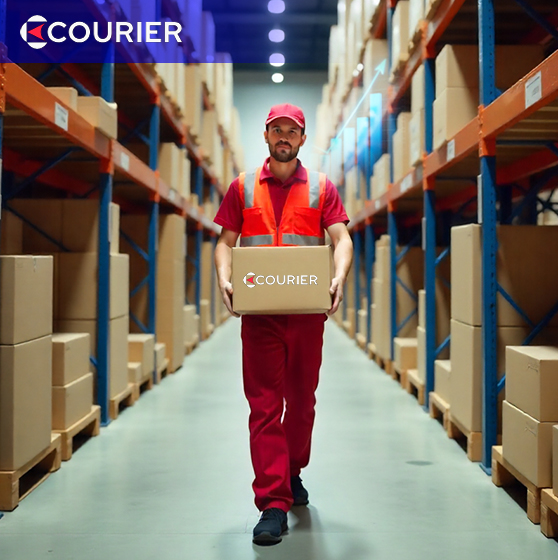
 25th September , 2025
25th September , 2025 
